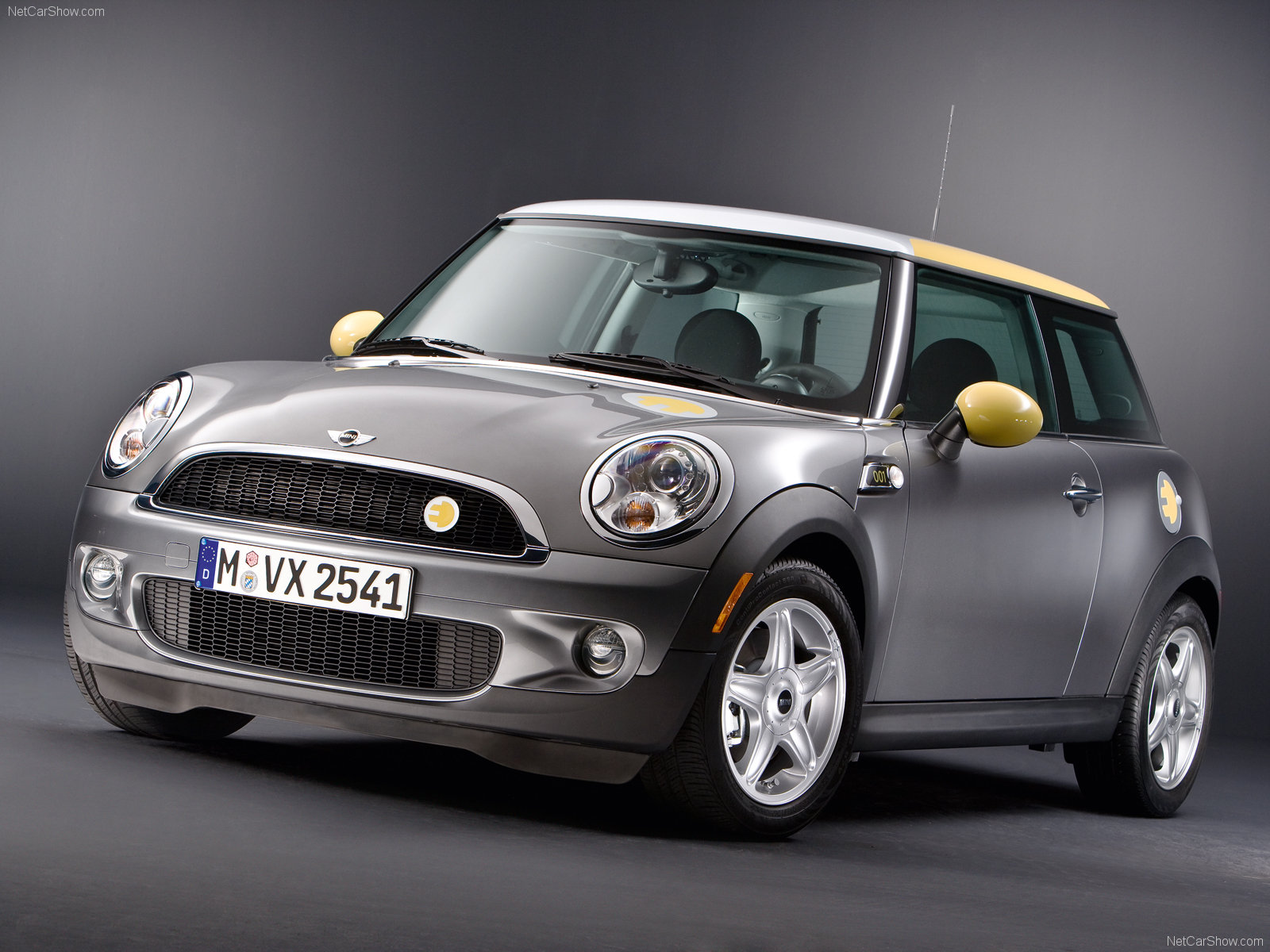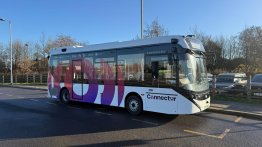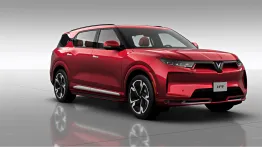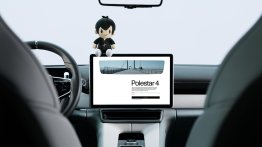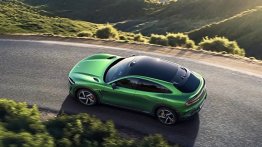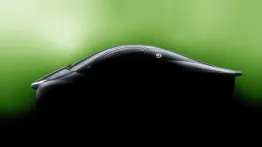Electric cars seem to be the future and although one might argue that their carbon footprint is almost the same as a normal IC engined car, use of alternate and renewable energy will surely put all the drawbacks to rest. We had the Chevrolet Volt and now BMW has just unveiled the Mini Cooper electric. So how is it like? Lets find out.
This is the new Mini E, a pure-electric version of the company’s popular hatchback. Sadly it’s not a full production car just yet. The Mini E is a project designed to investigate how viable an all-electric Mini would be. Between 500 and 1000 examples will be made and leased out to selected customer in New York, LA, New Jersey and possibly London, cities where the necessary recharging infrastructure is already in place.
Equipped with a 572-pound lithium ion battery of unknown capacity, the MINI E reportedly has a range of 150 miles after an 8-hour charge. Its electric heart beats out 204-horsepower and 162 lb-ft of torque, which should be plenty to make this MINI scoot. This drives the front wheels via a single-stage helical gearbox that is mounted where a standard Mini’s rear passenger seats are usually found. Kinetic energy created under braking is also stored in the Mini E’s batteries.
More details, press release and pictures after the break
The entire car weighs in at a bit over 3,200 pounds and regenerative braking is used to extend the range. Body modifications are minimal, with unique badges and paint separating the E from its gas-powered siblings. On the inside, the gages have been switched up, with a multi-function unit in front of the driver, though the speedometer is still front and center in the middle of the dash.
Recharging takes place via a specially adapted electric socket (which replaces the fuel filler cap), and takes around eight hours for a full charge. This gives the Mini E a range of around 150 miles.
The Mini E is focused on city running and conserving energy, so Mini has limited its top speed to just 95mph.
But even with a kerb weight of 1465kg – some 260kg of which is the battery pack alone – the Mini E manages to accelerate to 62mph in 8.5sec. Energy consumption is put at around 4.4 miles/kWh.
The Mini’s suspension has been reworked with revised springs and damping to cope with the awkward weight distribution, but engineers claim that it could keep up with its conventional siblings.
Despite its project status, the Mini E also conforms to all US safety laws and has been extensively crash tested. The Mini E will make its public debut at next month’s Los Angeles motor show.So another winner in the making? You bet!
Source : Autocar UK and Auto Blog Green
Release and Hi-res images via Net Car Show
Driven by electricity: reliably, affordably and free of emissions.
A full recharge draws a maximum of 28 kilowatt hours of electricity from the grid. Based on the car's range, a kilowatt hour translates into 5.4 miles. Besides the benefit of zero-emissions driving, the MINI E thus offers significant economic advantages over a vehicle powered by a conventional internal combustion engine as well.
The heavy-duty battery delivers its power to an electric motor, which transforms it into thrilling agility. Mounted transversely under the MINI E's bonnet, the drive train unleashes its full thrust from a dead standstill. This provides for the car's fascinating launch capability. The MINI E's intense driving experience is augmented by its dynamic deceleration potential, which is also directly coupled to the accelerator pedal. As soon as the driver releases the gas pedal, the electric motor acts as a generator. This results in braking force, and the power recovered from the kinetic energy is fed back to the battery. This interaction ensures extremely comfortable drives - especially at medium speed with constant, but marginal, variation. In city traffic, some 75 percent of all deceleration can be done without the brakes. Making substantial use of this energy recuperation feature extends the car's range by up to 20 percent.
Signature MINI agility in a new guise.
Weighing in at 1,465 kilograms (3.230 lbs), the MINI E has an even weight distribution. Minor modifications made to the suspension ensure safe handling at all times. The Dynamic Stability Control (DSC) system has been adapted to this model's specific wheel loads.
The MINI E's brake system comes with a newly developed electric underpressure pump. Its Electrical Power Assisted Steering (EPS) is the same as the one used in mass-produced MINIs. Both brake and steering assistance react to driving conditions and are thus extremely efficient. Even the air conditioning's electrical compressor only operates if desired or necessary.
Design: unmistakably MINI, undoubtedly new.
At first glance, the MINI E is obviously an iteration of the brand. But its design, which is the blueprint for the zero-emissions two-seater, has been complemented by a number of visual cues that point to its revolutionary drive concept. All of the units produced for the pilot project will have the same paintwork and bear a serial number on their front fenders.
The MINI E's coachwork sports an exclusive combination of metallic Dark Silver on all panels but the roof, which is clad in Pure Silver. What distinguishes the zero-emissions MINI is a specially designed logo in Interchange Yellow, depicting a stylized power plug in the shape of an "E" set against the silver backdrop. It has been applied to the roof, in smaller dimensions to the front and back, to the charger port lid, the dashboard trim, and - combined with the MINI logo - to the door jamb, in slightly modified form. The color of the roof edges, mirror housings, interior style cues and seat seams will match the logo's yellow tone as well.
Moreover, the central gauge and the battery level indicator behind the wheel of the MINI E, which replaces the MINI's rev counter, feature yellow lettering against a dark grey background. The battery level is displayed in percentage figures. The central gauge includes an LED display indicating power consumption in red and power recuperation in green.
MINI E customers will be part of a pioneering mission.
A 500-unit, limited-production MINI E series will be manufactured through the end of 2008. The project will thus attain an order of magnitude that clearly exceeds the size of currently comparable test series. Putting the MINI E on the road on a daily basis will be a pioneering feat to which both the drivers and engineers of the first zero-emissions MINI will contribute as a team.
MINI E customers will join forces with BMW Group experts to assist in the project's scientific evaluation. MINI E engineers accord high importance to staying in touch with the drivers on a regular basis, as this will help them analyze driver behavior besides vehicle characteristics in order to gain the most accurate and realistic picture of the demands placed on a vehicle with a purely electrical drive in the select usage areas.
Special charging station and full service for every MINI E.
The cars will change hands based on a one-year lease with an extension option. Monthly lease installments will cover any required technical service including all necessary maintenance and the replacement of wearing parts. At the end of the lease, all of the automobiles belonging to the project will be returned to the BMW Group's engineering fleet where they will be subjected to comparative tests.
The MINI E's lithium-ion battery can be charged using a wallbox provided to MINI customers. Only lockable garages or similar buildings will qualify as homebases and power stations for the MINI E.
Maintenance by qualified specialists.
The electric drive's high-voltage technology requires that maintenance work be done by qualified personnel using special tools that are not included in MINI service partners' standard toolboxes. In light of this, a service base will be set up on both coasts, staffed by service engineers that are specially trained to perform maintenance and repair work on the MINI E's electrical components. In the event of drive malfunction, these experts will provide professional support at the customer's local MINI dealer or the service base's specially equipped workshop. Technical inspections will take place after 3,000 miles (just under 5,000 kilometers) and at least after six months.
Production in Oxford and Munich.
The MINI E has already gone through the major phases of product development for mass-produced vehicles and passed numerous crash tests on the way. Aspects investigated besides passenger protection were the impact of collision forces on the lithium-ion battery and finding a non-hazardous location for it in the car. The MINI E's energy storage unit emerged completely unscathed from all of the crash tests mandated by US standards, which are especially high.
Production of the approximately 500 cars will take place at the company's Oxford and Munich sites and is scheduled for completion before the end of 2008. MINI's UK plant will be responsible for manufacturing the entire vehicle with the exception of the drive components and the lithium-ion battery, with the brand's series models rolling off its assembly lines concurrently. The units will then be transferred to a specially equipped manufacturing complex situated on BMW plant premises where the electric motor, battery units, performance electronics and transmission will be integrated.
Technical Specifications
- Doors: 3
- Seats: 2
- Length: 3.714 mm (146.2")
- Width: 1.683 mm (66.3")
- Height: 1.407 mm (55.4")
- Wheelbase: 2,467 mm (97.1")
- Track
- front: 1,453 mm (57.2")
- rear: 1,461 mm (57.5")
- Turning circle: 10.7 m (35.1 feet)
- Curb weight: 1.465 kg (3.230 lbs)
- Payload: 195 kg (430 lbs)
- Gross vehicle weight rating: 1,660 kg (3,656 lbs)
- Cargo space (DIN): 60 l
- Engine
- Type: Electric motor
- Motor type: Asynchronous motor
- Power output: 204 hp (150 kw)
- Torque: 220 Nm (from idle)
- Max. RPM (cut off): 12,500 rpm
- Electrical System
- Battery capacity: 35kWh, approx. 28kWh of which useable
- Battery weight: 260 kg (573 lbs)
- Charging time
- 23.6 h @ 110 V/12 A (1.3 kW)
- 4.4h @ 240 V/32 A (7.0 kw)
- 2.9h @ 240V/48 A (10.6 kW)
- Battery design: 53 cells connected in parallel constitute a unit, 2 units connected in series constitute a module, 48 modules connected in series constitute the battery; 5,088 individual cells in total
- Battery cooling: Air cooling via temperature-, load- and speed-sensitive fans
- Battery location: Extends rearward from the heel plate; replaces the rear seat bench
- Peak current: Short bursts of up to 900A
- Running Gear
- Front wheel suspension: Single-joint McPherson spring strut axle with anti-dive control
- Rear wheel suspension: Longitudinal link with centrally mounted control arms, z axis
- Front brakes: Vented disc, Diameter: 294 mm (11.6")
- Rear brakes: Disc, Diameter: 259 mm (10.2")
- Road stability systems: DSC adapted to modified curb weight and wheel load (always on), low-friction recuperation control via DSC, ELUP (electronic underpressure pump) brake boost
- Steering: Rack and pinion with electronic power steering (EPS)
- Total steering transmission ratio: 14.1:1
- Type of transmission: Single-stage helical gearbox, derived from the Cooper S helical gearbox
- Axle load distribution
- front: 750 kg (1,651 lbs)
- rear: 715 kg (1,575 lbs)
- Tires: All-season Runflat 16"
- Performance Ratings
- Power-to-weight ratio (DIN): 9.76 kg/kW
- Acceleration 0-100 km/h (0-62 mph): 8.5 s
- Top speed: 152 km/h (95 mph)
- Range (FTP 72): 240 km (150 miles)
- Consumption (FTP 72): 0.12kWh/km (0.19 kWh/mls)
- CO2 Emission: 0 g/km
